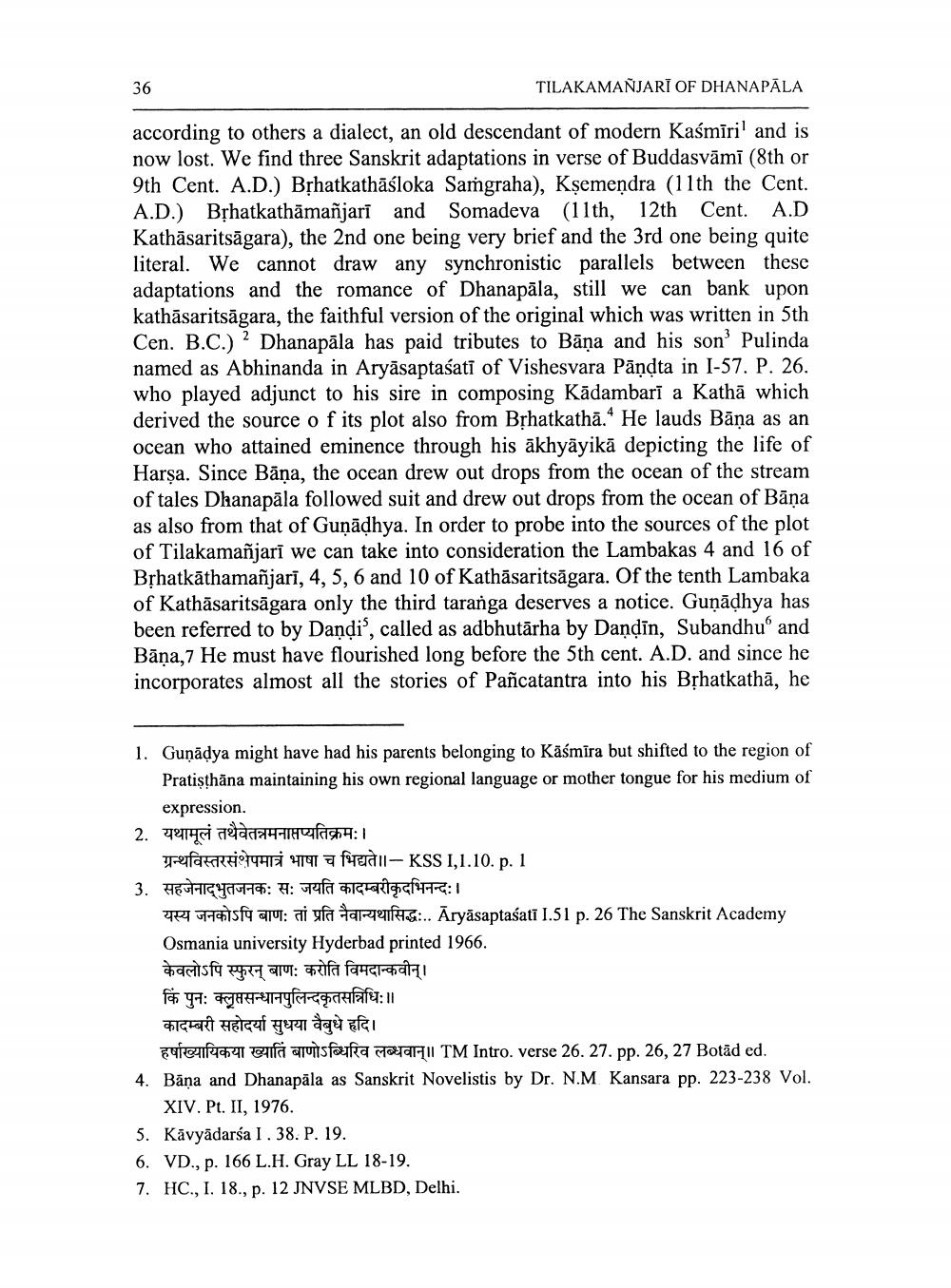________________
36
TILAKAMAÑJARĪ OF DHANAPĀLA
according to others a dialect, an old descendant of modern Kasmiri' and is now lost. We find three Sanskrit adaptations in verse of Buddasvāmī (8th or 9th Cent. A.D.) Brhatkathāśloka Saṁgraha), Kșemendra (11th the Cent. A.D.) Bịhatkathāmañjari and Somadeva (11th, 12th Cent. A.D Kathāsaritsāgara), the 2nd one being very brief and the 3rd one being quite literal. We cannot draw any synchronistic parallels between these adaptations and the romance of Dhanapāla, still we can bank upon kathāsaritsāgara, the faithful version of the original which was written in 5th Cen. B.C.) 2 Dhanapāla has paid tributes to Bāņa and his son? Pulinda named as Abhinanda in Aryāsaptašati of Vishesvara Pāndta in I-57. P. 26. who played adjunct to his sire in composing Kādambarī a Kathā which derived the source of its plot also from Brhatkathā." He lauds Bāna as an ocean who attained eminence through his ākhyāyikā depicting the life of Harsa. Since Bāņa, the ocean drew out drops from the ocean of the stream of tales Dhanapāla followed suit and drew out drops from the ocean of Bāna as also from that of Guņādhya. In order to probe into the sources of the plot of Tilakamañjarī we can take into consideration the Lambakas 4 and 16 of Bịhatkāthamañjarī, 4, 5, 6 and 10 of Kathāsaritsāgara. Of the tenth Lambaka of Kathāsaritsāgara only the third taranga deserves a notice. Guņādhya has been referred to by Dandi', called as adbhutārha by Dandin, Subandhu and Bāņa, 7 He must have flourished long before the 5th cent. A.D. and since he incorporates almost all the stories of Pañcatantra into his Brhatkathā, he
1. Gunädya might have had his parents belonging to Kāśmīra but shifted to the region of
Pratisthāna maintaining his own regional language or mother tongue for his medium of
expression. 2. ei aeda rifach:
TefR 9HF 4791 afvaali- KSS 1,1.10. p. 1 3. HIGYA119: :upefa Aracatacft :1
app asfam: ai ufa ARNAG... Āryāsaptasati 1.51 p. 26 The Sanskrit Academy Osmania university Hyderbad printed 1966. केवलोऽपि स्फुरन् बाणः करोति विमदान्कवीन्। किं पुन: क्लृप्तसन्धानपुलिन्दकृतसन्निधिः॥ कादम्बरी सहोदर्या सुधया वैबुधे हृदि।
afe40 ufa arunstaura parar TM Intro. verse 26. 27. pp. 26, 27 Botād ed. 4. Bāna and Dhanapāla as Sanskrit Novelistis by Dr. N.M Kansara pp. 223-238 Vol.
XIV. Pt. II, 1976. 5. Kavyādaría I. 38. P. 19. 6. VD., p. 166 L.H. Gray LL 18-19. 7. HC., I, 18., p. 12 JNVSE MLBD, Delhi.




